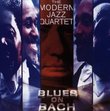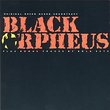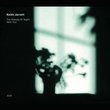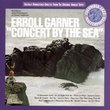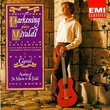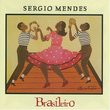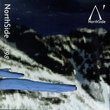| All Artists: Terry Riley, Kronos Quartet Title: Terry Riley: Salome Dances for Peace Members Wishing: 2 Total Copies: 0 Label: Nonesuch Release Date: 10/20/1989 Genres: Jazz, Classical Styles: Avant Garde & Free Jazz, Chamber Music, Historical Periods, Classical (c.1770-1830), Modern, 20th, & 21st Century Number of Discs: 2 SwapaCD Credits: 2 UPCs: 075597921724, 007559792172 |
Search - Terry Riley, Kronos Quartet :: Terry Riley: Salome Dances for Peace
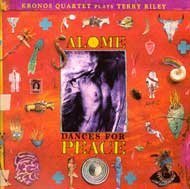 | Terry Riley, Kronos Quartet Terry Riley: Salome Dances for Peace Genres: Jazz, Classical How often are you likely to listen to a 100-minute composition of strongly rhythmic character for string quartet? If the answer is, often enough to buy a recording, you'll want this one. Terry Riley was a proto-minimalist ... more » |
Larger Image |
CD DetailsSynopsis
Amazon.com How often are you likely to listen to a 100-minute composition of strongly rhythmic character for string quartet? If the answer is, often enough to buy a recording, you'll want this one. Terry Riley was a proto-minimalist who remained on the fringe of public awareness while others such as Glass and Reich became popular. This piece doesn't sound like anyone else's work, but it's likelier to appeal to people who like Glass and Reich than to those whose taste stops at Beethoven. Riley writes fascinatingly for string quartet, and of course he gets a performance of boundless energy from Kronos. I found this set fascinating. --Leslie Gerber Similarly Requested CDs
|
CD ReviewsOne of the Most Important Late 20th Century Quartets Christopher Forbes | Brooklyn,, NY | 01/29/2003 (5 out of 5 stars) "More than 10 years after it's composition, Terry Riley's Salome Dances for Piece is looking like it will be his masterwork. Though certainly In C garners more performances and it's elegant concept is immediately attractive, Salome is a more profound work and shows the composer off in his most intersting guise. Salome was commissioned by the Kronos Quartet, who perform it here. Like many of Riley's pieces, Salome has an intricate program, involving elements from world mythology. Briefly, Salome is charged with descending to the spirit world to recover peace for humanity. The mythos is typical Riley...everything but the kitchen sink is thrown into his hippy mix. While the program is interesting, the work stands on it's own merits. Initial exposure to the piece was provided on the Kronos disc, Winter Was Hard and comparing that version of Half-Wolf Dances Mad in the Moonlight with the version on Salome is relevatory. Listening to the works side by side helps to demonstrate the amount of improvisation that Riley structures into his piece. Certainly many figures are prewritten, but much of the work leaves room for individual contribution by the members of Kronos. Often a Riley work may just include a few figures and a series of scales to improvise on. The amazing thing is that, while the details of the work are always different, the overall effect is the same. Riley has managed to integrate the improvised and the composed seemlessly in his piece. The language of Salome is varied, from pentatonic minimalism to things that almost sound like Bartok. But it is never austere. Salome is a dance of joy by one of the most joyous composers of the 20th century." Complex, Challenging... Overall Charming! Vargiu Riccardo James | Bologna, Italy | 07/08/2000 (5 out of 5 stars) "Terry Riley's string quartet is most certainly a remarkable composition, I daresay a gem of contemporary music. And, needless to say, Kronos performs it brilliantly. The first things that come to mind about Salome Dances for Peace are: 1) its extraordinary length: it is nearly two hours long; 2) its intricacy: this piece requires attention, concentration and lots of thinking over, and even then it remains impenetrable at first. I'm no musicologist, I'm afraid, so I won't even try to elucidate the technical aspects of Salome Dances for Peace: someone else - more competent and patient than myself - will do that soon, I hope. What I can say is that this composition is likely to interest contemporary music enthusiasts and/or experts, while it may not do the trick for the average classical music amateur. Kronos Quartet collectors, too, will want to own this CD, as I did, and - listening to it over and over again - will learn to love it, no doubt. But complex it is, and potential buyers might like to know that. I rate Salome Dances for Peace "five stars," because it is a challenging and at the same time charming piece of art, which adds something new and vital to the corpus of classical music. Also, I rate it "five stars" to celebrate its heroine, Salome... After having seduced Wilde, Strauss and us all for her beauty, her passion and her cruelty so naïve and unaware of consequence, she comes back to seduce us once again, only this time with her strength." On my shortlist of favorite String Quartets from the second Discophage | France | 07/12/2010 (5 out of 5 stars) "In the late 1970s and early 1980s, Terry Riley initiated a fruitful collaboration with the Kronos Quartet, met at Mills College. Although the inventor, in 1964, of "minimalism", with his seminal "In C", Riley wasn't the main proponent of that style. He let that to Reich, Glass and Adams in the US, and to composers like Nyman, Pärt, Gorecki, Tavener, Andriessen in Europe. Incidentally, I prefer to call it "repetitive music", to distinguish it from the true minimalism of Morton Feldman, Giancinto Scelsi, Helmut Lachenmann or Salvatore Sciarrino, a music mostly slow-moving, made of very sparse and minimal musical events, often at the threshold of silence, each of them thus acquiring tremendous impact. On the other hand repetitive music, although based on small cells ever repeated and pulsating, can be very thick and busy, thanks to its processes of piling and tiling and rhythmic "out-of-syncic"
Anyway, Riley soon moved on to night-long keyboard improvisations in the manner of his teacher and mentor LaMonte Young (of which Harp of New Albion - and all but "minimal" piece - gives a good idea, The Harp of New Albion) and to North-Indian raga, under the tutelage of Pandit Pran Nath. So the collaboration with the Kronos Quartet came at the right time and enabled Riley to return to the West's time-hallowed instrumental combination, with entirely new ideas and fresh views. He infused his quartets with his love and fascination not only for North-Indian music, but also for North-American Indian Folk-music. Thus the quartets are closer to the kind of "World Music" the Kronos Quartet soon became associated with, but that doesn't make them "simple" music, and Riley uses to full effect all the instrumental and expressive possibilities of the medium. The first batch of quartets, completed between 1980 and 1983 and collated on Cadenza on the Night Plain, were already wonderful, dance-like and dynamic, colorful, easy-listening without being facile or pandering. If possible, Salome Dances for Peace, composed between 1985 and 1987, goes even further and is freer and more inventive in its expression and language. It is a quasi-ballet, but its narrative doesn't really matter, and one can very well listen to this two-hour long set as pure music. Salome is called back from the dead to perform again her dances, "as an embodiment of the feminine force", but this time to win back peace on earth, with the help of the shaman-warrior Half-Wolf. So, buy it or not, but whatever the underlying story, the music is wonderfully colorful and inventive, 20th century timeless, immensely appealing, going through a wide variety of moods, very free in construction but the juxtapositions always sound organic. This is not high-browed music (and don't get me wrong: I enjoy high-browed music) but still it is highly cultivated, drawing upon a vast but concealed knowledge of both vernacular and art music. Among my favorite String Quartets from the latter half of the 20th Century - all the way up there with those of Ligeti, Dutilleux, Lutoslawski and Isang Yun, to name those that come to mind as I write. " |

